Veteran Art Triennial explores the ‘transformative power of art’
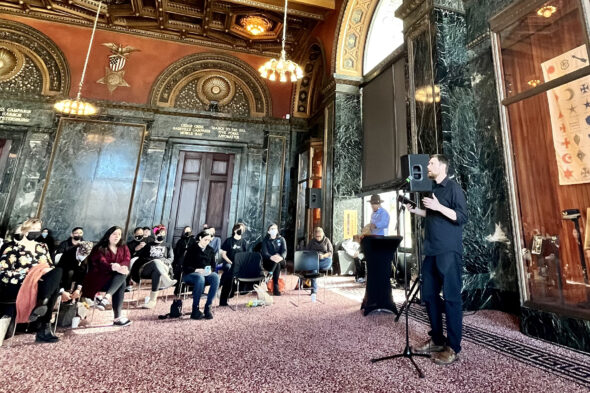
The second Veteran Art Triennial focusing on art by veterans and communities impacted by U.S. wars is underway at three Chicago locations as part of a National Endowment for the Humanities-funded project helmed by two University of Illinois Chicago scholars.
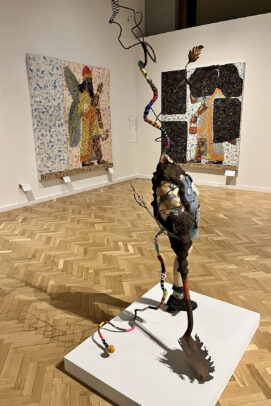
The project, “Surviving the Long Wars: Visualizing Parallels Between the U.S. ‘Indian Wars’ and the ‘Global War of Terror,'” is a collaboration between the emerging Veteran Art Movement and UIC. Therese Quinn, UIC professor and director of museum and exhibition studies, and Ronak K. Kapadia, UIC associate professor of gender and women’s studies, are the project’s co-directors.
Artists and Marine Corps veterans Joseph Lefthand, a descendant of the Cheyenne-Arapaho, Taos and Zuni tribes; and Aaron Hughes, UIC adjunct assistant professor of art history, are co-organizers of the project. Lefthand and Hughes are Iraq War veterans.
Inspired by the powerful artwork of Indigenous artists responding to the “American Indian Wars” and artists of the Greater Middle East reacting to the “Global War on Terror,” Kapadia said, the second Veteran Art Triennial and Summit focuses on how these artistic responses complicate and are entangled with the creative practices of veterans.
The featured artworks, projects, programs and exhibitions create opportunities for people to gain a deeper understanding of war’s impact. The triennial is open to the public and takes place at the Newberry Library, the Chicago Cultural Center and the Hyde Park Art Center.
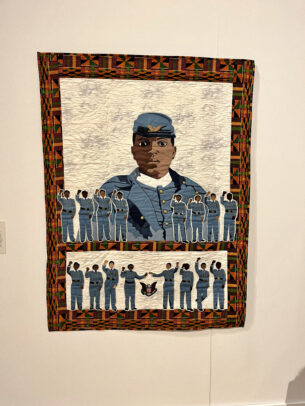
In addition, a summit held in March featured poetry readings, panels, art-making and movement workshops, exhibition tours and live performances.
“The triennial and summit are about the transformative power of art. It is about the way art can create connections across differences, transform trauma into meaning and inspire a more peaceful future,” Hughes said. “It’s about what we all need to survive.”
An earlier summit and triennial exhibition, “A Century of War and Survival,” occurred in 2019 through the first National Endowment for the Humanities-supported grant initiative, “Dialogues on the Experience of War.”
In the latest summit, the group joined with the Veteran Art Movement to incorporate academic study, curatorial research and focused group discussions, which culminated in veteran-led discussion forums.
During the 2022-2023 academic year, the collective organized a seven-part virtual scholarly seminar series funded by the UIC Institute for the Humanities exploring the history and future of “Native” rebellion concerning U.S. militarism and warfare. The series brought prominent speakers to campus, including Roxanne Dunbar-Ortiz, Nick Estes, Harsha Walia, Laleh Khalili, among others.
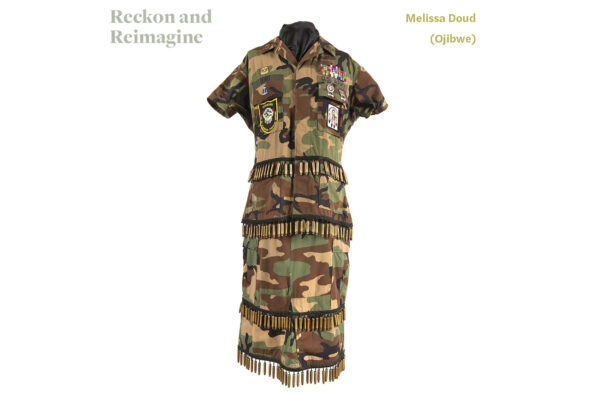
The Veteran Art Movement is a decentralized network of veterans and service members committed to making art and using creative practices to transform themselves and society.
“The Surviving the Long Wars Summit was timed to commemorate the 20th anniversary of the U.S. illegal invasion of Iraq and the untold horrors that followed in its wake,” Kapadia said. “The keyword for me at this summit was ‘breathing.’ Breathing as constitutive to living, to surviving, to healing.”
The 2023 Veteran Art Triennial is composed of three exhibitions featuring over 45 contemporary artists. It reveals the connections that emerge between personal and collective histories of Black, Indigenous and people of color communities marked by the legacies of the two longest wars in U.S. history — the “American Indian Wars” and the “Global War on Terror.”
- “Surviving the Long Wars: Residues and Rebellions” will run until May 27 at the Newberry Library, 60 W. Walton St. The exhibit features historic works from the Newberry’s Edward E. Ayer Collection, including the Black Horse Ledger (Cheyenne), Kiowa Indian ledger drawings, and ink and watercolor drawings by Frederick Gokliz (Apache). In addition, the work of Black, Indigenous and people of color focusing on survival and resistance are featured.
- “Surviving the Long Wars: Reckon and Reimagine” will run until June 4 at the Chicago Cultural Center, 78 E. Washington St. A gallery talk will be held May 10, noon-1 p.m. The exhibit, located in the exhibition hall on the fourth floor of the center, features the powerful work of Indigenous artists responding to the “American Indian Wars” alongside artists from the Greater Middle East and its diasporas reacting to the “Global War on Terror.” The exhibition explores how these works complicate and relate to the creative practices of Black, Indigenous and people of color veterans whose experiences profoundly challenge the dominant histories of these long wars.
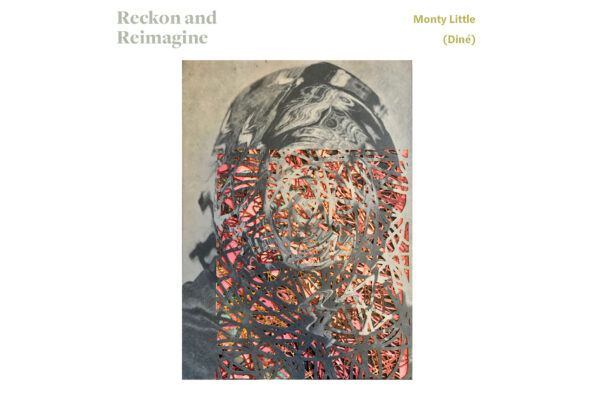
- “Surviving the Long Wars: Unlikely Entanglements” will run until July 9 at the Hyde Park Art Center, 5020 S. Cornell Ave. Visual parallels and connections surface — from contrasting viewpoints and across differences between artworks by civilians impacted by these long wars and Black, Indigenous and people of color military veterans. These “unlikely entanglements” highlight the aesthetic affinities that form between different histories, geographies and peoples resisting colonialism. The featured artists use collage, embroidery, soft sculpture and installation to unravel dominant histories of militarism while weaving together intimate stories of survival and resistance. Collectively, these consequential artworks of wartime survivors and their descendants conjure meaning out of the traumatic afterlives of the long wars while creating space for solidarity and alternative futures.
Quinn, who heads the Museum and Exhibitions Studies program within the School of Art and Art History in the College of Architecture, Design and the Arts, said the initiative is in line with the undertaking to explore the social role of museums encompassed by the International Movement for a New Museology.
“MINOM asked museums to reorient their focus from preservation to transformation and asserted a role for museums in fostering ‘peace culture’ through their exhibitions and programs,” Quinn said. “Surviving the Long Wars is a powerful example of this.”
